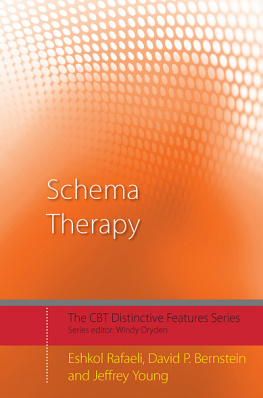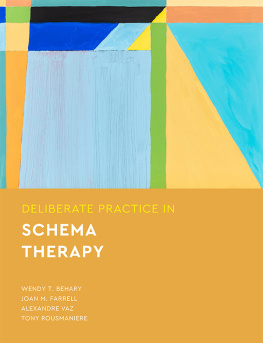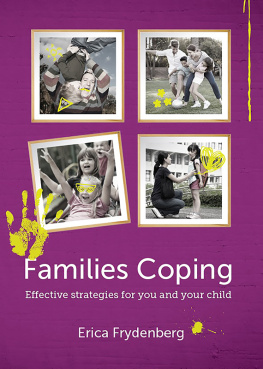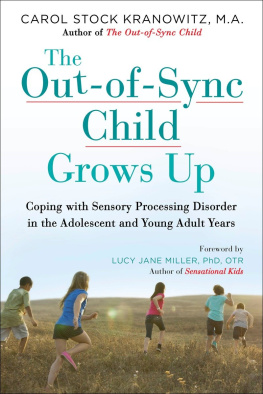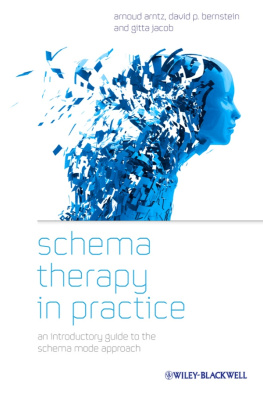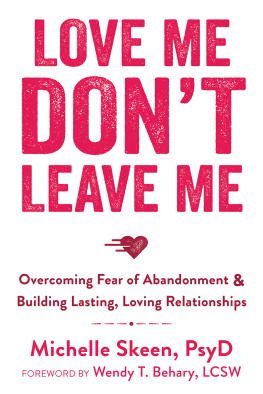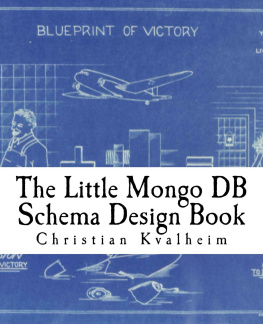Schema Therapy
Schema Therapy combines proven cognitive behavioral therapy techniques with elements of interpersonal, experiential, and psychodynamic therapies in order to help people with long-term mental health problems including personality disorders and chronic depression. Schema Therapy suggests that many negative cognitive conditions are based on past experiences, and therefore provides models for challenging and modifying negative thoughts and behaviors in order to provoke change.
In this book, Eshkol Rafaeli, David Bernstein and Jeffrey Youngpioneers of the Schema Therapy approachindicate the 30 distinctive features of Schema Therapy, and how the method fits into the broader CBT spectrum.
Divided into two parts, Theoretical Points and Practical Points. This book provides a concise introduction for those new to the technique, as well as a discussion of how it differs from the other cognitive behavioral therapies for those experienced in the field.
Eshkol Rafaeli is a Clinical Psychologist specializing in both cognitive behavioral therapy and Schema Therapy and is Associate Professor at Bar-Ilan University, Israel.
David P.Bernstein is Associate Professor in the Faculty of Psychology at Maastricht University, The Netherlands.
Jeffrey Young is the Founder and Director of the Cognitive Therapy Centers of New York and Connecticut, and the Schema Therapy Institute in New York City.
Cognitive behavior therapy (CBT) occupies a central position in the move towards evidence-based practice and is frequently used in the clinical environment. Yet there is no one universal approach to CBT and clinicians speak of first-, second-, and even third-wave approaches.
This series provides straightforward, accessible guides to a number of CBT methods, clarifying the distinctive features of each approach. The series editor, Windy Dryden, successfully brings together experts from each discipline to summarize the 30 main aspects of their approach divided into theoretical and practical features.
The CBT Distinctive Features Series will be essential reading for psychotherapists, counselors, and psychologists of all orientations who want to learn more about the range of new and developing cognitive behavioral approaches.
Titles in the series:
Acceptance and Commitment Therapy by Paul E.Flaxman, J.T. Blackledge and Frank Bond
Becks Cognitive Therapy by Frank Wills
Behavioral Activation by Jonathan Kanter, Andrew M.Busch and Laura C.Rusch
Compassion Focused Therapy by Paul Gilbert
Constructivist Psychotherapy by Robert A.Neimeyer
Dialectical Behaviour Therapy by Michaela A.Swales and Heidi L.Heard
Metacognitive Therapy by Peter Fisher and Adrian Wells
Mindfulness-Based Cognitive Therapy by Rebecca Crane
Rational Emotive Behaviour Therapy by Windy Dryden
Schema Therapy by Eshkol Rafaeli, David P.Bernstein and Jeffrey Young
For further information about this series please visit www.routledgementalhealth.com/cbt-distinctive-features
Schema Therapy
Distinctive Features
Eshkol Rafaeli, David P.Bernstein and Jeffrey Young

LONDON AND NEW YORK
First published 2011
by Routledge
27 Church Road, Hove, East Sussex BN3 2FA
Simultaneously published in the USA and Canada
by Routledge
270 Madison Avenue, New York, NY 10016
Routledge is an imprint of the Taylor & Francis Group, an Informa business
This edition published in the Taylor & Francis e-Library, 2011.
To purchase your own copy of this or any of Taylor & Francis or Routledges collection of thousands of eBooks please go to www.eBookstore.tandf.co.uk.
2011 Eshkol Rafaeli, David P.Bernstein and Jeffrey Young
Cover design by Sandra Heath
All rights reserved. No part of this book may be reprinted or reproduced or utilized in any form or by any electronic, mechanical, or other means, now known or hereafter invented, including photocopying and recording, or in any information storage or retrieval system, without permission in writing from the publishers.
This publication has been produced with paper manufactured to
strict environmental standards and with pulp derived from
sustainable forests.
British Library Cataloguing in Publication Data
A catalogue record for this book is available from the British Library
Library of Congress Cataloging in Publication Data
Rafaeli, Eshkol, 1970
Schema therapy: distinctive features/Eshkol Rafaeli, David P. Bernstein & Jeffrey Young.
p. ; cm.
ISBN 978-0-415-46298-3 (hbk.)ISBN 978-0-415-46299-0 (pbk.) 1. Schema-focused cognitive therapy. I. Bernstein, David P. II. Young, Jeffrey E., 1950III. Title.
[DNLM: 1. Cognitive Therapy-methods. 2. Mental Disorderstherapy. WM 425.5.C6 R136s 2010]
RC489.S34R34 2010
616.89'1425dc22
2010014269
ISBN 0-203-84170-0 Master e-book ISBN
ISBN: 978-0-415-46298-3 (hbk)
ISBN: 978-0-415-46299-0 (pbk)
Contents
Introduction
Cognitive behavioral therapy (CBT) has developed a strong identity as an umbrella term for time-limited evidence-based treatments for Axis I disorders. Yet CBT models for addressing personality disorders and other enduring patterns of relational and emotional difficulties are gaining greater attention. One of the leading models is Schema Therapy, first introduced by Young (1990) and more recently elaborated by Young and his colleagues (Young, Klosko, & Weishaar, 2003).
Schema Therapy is an integrative approach, bringing together elements from cognitive therapy (and CBT more generally), attachment and object relations theories, and Gestalt and experiential therapies. Our aim is to present the features that distinguish Schema Therapy within the broader cognitive behavioral field. As we make clear in the ensuing chapters, there are both theoretical and practical distinctions. But some overarching distinctions are worth noting here. First, unlike more traditional CBT approaches, Schema Therapy is explicitly concerned with the development (etiology) of current symptoms, and not only with the factors that maintain them. Second, it places a great emphasis on the therapist-patient relationship, and on providing within it both a corrective emotional experience and empathic confrontation. Third, it sets a clear goal to which the therapist should aspire: helping patients understand their core emotional needs and learn ways of getting those needs met in an adaptive manner, which requires altering long-standing cognitive, emotional, relational, and behavioral patterns.
The first half of this book (Points 115) details the theoretical model espoused by schema therapists. This model devotes great attention to core universal emotional needs (Point 1), and argues that maladaptive schemas (Points 2 and 3) emerge when these needs are not met. It also recognizes the existence of three broad and maladaptive coping styles: surrender, avoidance, and overcompensation (presented in Point 4 and detailed in Points 57).
In the past 15 years, a refinement of Schema Therapy has led to the development of an additional construct, that of modes, which has become crucial to the work of schema therapists. We describe this concept generally (Point 8) and then pay greater attention to the main types of modes encountered in clinical work (Points 913). Finally, we conclude the theoretical half of the book with a discussion of the therapeutic stances central to Schema Therapy: limited reparenting and empathic confrontation (Points 1415).

